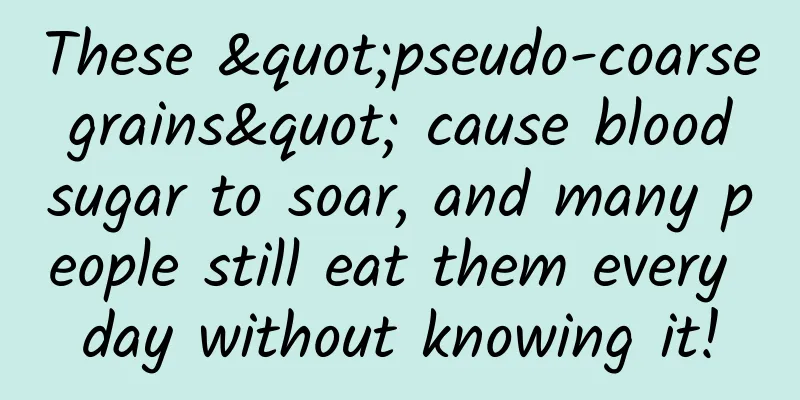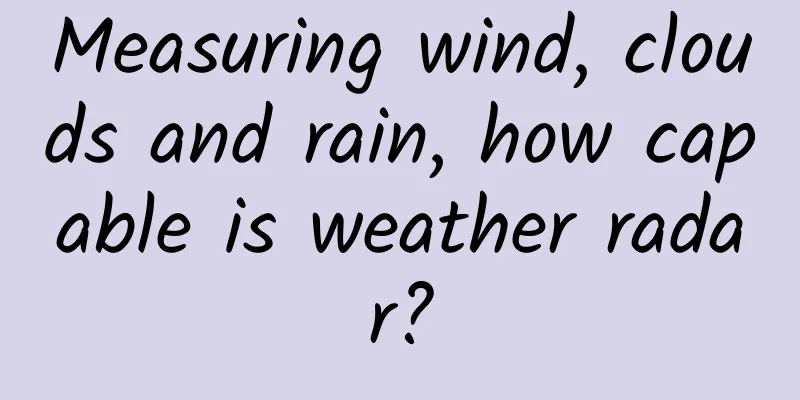These "pseudo-coarse grains" cause blood sugar to soar, and many people still eat them every day without knowing it!

|
Most people have this understanding: coarse grains raise blood sugar more slowly, and eating appropriate amounts of coarse grains is beneficial for controlling blood sugar. In fact, coarse grains are a large family, and not all coarse grains have the effect of controlling blood sugar. If they are not chosen or eaten correctly, some coarse grains can even be called "pseudo-coarse grains" because they raise blood sugar faster than fine grains such as rice and white flour. If you choose the wrong type, your blood sugar level will rise quickly Grains with a sticky texture , such as glutinous rice, yellow rice, glutinous corn, black glutinous rice , etc., raise blood sugar levels quickly. The main component of staple foods such as coarse and fine grains is starch, which mainly comes in two types: amylopectin and amylose . Whole grains such as oats and red beans are high in amylose , which is arranged very tightly and is not easily broken down in the body, so has relatively little effect on blood sugar. Image source: Pixabay However, glutinous grains contain more amylopectin , which has many branches and a relatively loose structure, making it easy to digest and decompose, and causing blood sugar to rise faster. If your blood sugar is not well controlled, be sure to avoid whole grains that are high in amylopectin. Take glutinous millet as an example. Many people like to drink glutinous millet porridge for dinner, but in fact, glutinous millet porridge raises blood sugar faster than white rice porridge. If you need to control your blood sugar, you must not drink a lot of millet porridge, and you cannot only use porridge for breakfast or dinner. You can eat some dry staple food first and then drink porridge. The porridge should not be cooked too soft. The same meal should be paired with ingredients rich in protein and dietary fiber, such as milk, soy products, miscellaneous beans, vegetables, etc. Also pay attention to eating the staple food last, which is more friendly to blood sugar. Image source: Pixabay If you eat the wrong way , you may be eating "pseudo-whole grains" In terms of eating methods, many people like to grind whole grains into powder and then mix it with water to make a paste to drink, which they find convenient and nutritious. However, what you may not know is that the action of “powdering” will increase the glycemic index (GI) of food. From the table below, we can see that after whole grains are ground into powder, the GI generally increases, and some foods directly change from low GI to high GI foods. Comparison of glycemic index (GI) before and after powdering GI <55 is low, 55-70 is medium, >70 is high For example, red beans. When steamed normally, the GI of red beans is only 23. However, if they are ground into powder and eaten as a paste, the GI will more than triple to 72, making it a high GI food. Therefore, people who need to control their blood sugar must pay attention to this "trap". If you like to eat whole grain paste and need to control blood sugar, it is recommended to give priority to those with a relatively low glycemic index after grinding, such as mung beans and lentils, and avoid grinding red beans, coix seeds, black rice, etc. into powder to make paste. When making whole grain paste , you may want to replace water with milk Soy milk and milk contain various nutrients such as protein, fat, calcium, etc. Using them to make whole grain paste can slow down the rate of blood sugar rise to a certain extent, and the taste and nutrition are also better. When making it, you can mix one flat spoon of whole grain powder with 150 ml of hot milk or soy milk, but milk is preferred. Even if blood sugar is high , you can't just eat whole grains Although whole grains are good, it is best not to eat them alone. It is best to combine coarse and fine grains. Eating too much whole grains can easily cause discomfort, such as bloating, abdominal pain, indigestion, acid reflux, hiccups, etc. From the perspective of controlling sugar, it is best to control the ratio of coarse grains to fine grains at 1:1 or 2:1. People with better gastrointestinal function can eat half coarse grains and half fine grains, or even 2 coarse grains and 1 fine grain. People with weaker gastrointestinal function can eat 30% coarse grains and 70% fine grains. Image source: Pixabay In addition, it is recommended to evenly distribute whole grains into three meals a day, and not concentrate them all in one meal. Some people have difficulty digesting whole grains at night, and may experience acid reflux after lying down in bed. In this case, you can eat less or no whole grains at night. Planning and production Source: Eat three meals a day Author: Yu Kang, Professor of Clinical Nutrition Department, Peking Union Medical College Hospital Editor: Zhong Yanping |
<<: Predicting Flu Trends: Harder Than You Think
>>: Can trigger auroras! What exactly is the origin of geomagnetic storms?
Recommend
Traffic fraud? Weibo celebrities’ “self-destructive” crisis PR
1. The startup company earned its first hundred t...
The cold wind is howling. Each plant has its own unique way to save its life!
In order to compete for limited sunlight and wate...
HTML5 best practices to make Web App faster
[[136286]] Tip 1: Use web storage instead of cook...
The May Day brand traffic grab
As the May Day holiday approaches, various indust...
Google releases Android Game Development Kit (AGDK)
Google launched the Android Game Development Kit ...
Apple releases major update iOS 13: iPhone is finally not green anymore!
This morning, Apple officially released iOS 13.6....
After viewing more than 100,000 information flow ads, I summarized these 4 optimization directions!
After reading this article, you will get the foll...
International Day for the Elimination of Domestic Violence丨Beating is love, scolding is love? Stop making excuses! These are all domestic violence!
About personal safety protection order The person...
Tips for setting titles and covers for Kuaishou short videos!
Generally speaking, the number of views of high-q...
A family member is suddenly diagnosed with cancer, what can we do for them?
It is inevitable that relatives, friends, and acq...
Jay Chou invests in an Internet cafe and tests it out: 300 yuan gets you access to the idol's office
In addition to being a famous singer, Jay Chou is...
What are long tail keywords? Why long tail keywords?
For SEO website optimizers, the purpose of websit...
Can't stop eating sugar? Don't worry, our love for sugar is written in our genes
Although sugar tastes good, don't be greedy. ...
Toyota seeks collaboration to meet future challenges
Recently, according to foreign media reports, Toy...









